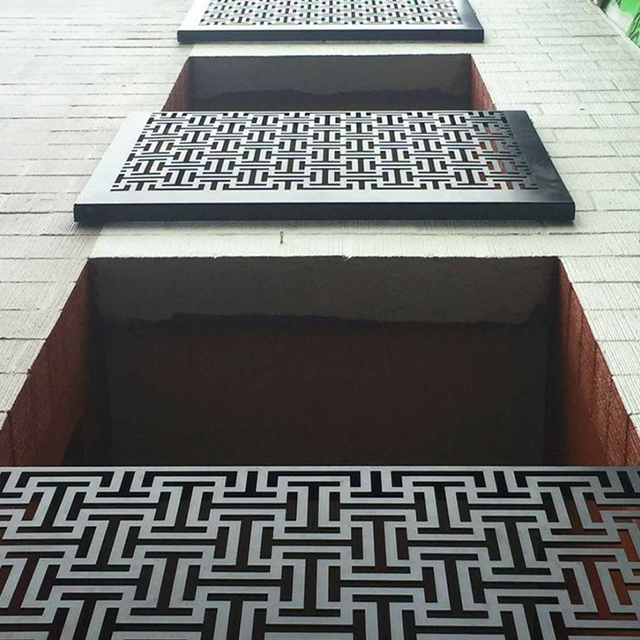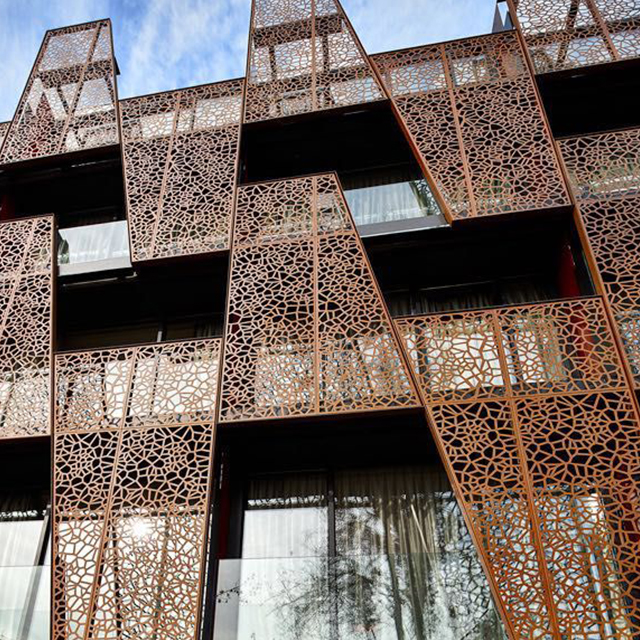In modern architecture, facades are not just protective barriers—they are also design statements that reflect a building’s character and functionality. An architectural facade is the exterior face of a building, which plays a crucial role in aesthetics, structural integrity, energy efficiency, and environmental impact. Whether you’re an architect, builder, or property owner, understanding the significance of architectural facades and their design principles is essential for creating sustainable and visually appealing structures.
This article will explore the importance of architectural facades, their types, and the advantages of using innovative materials, with a particular focus on aluminum facades.

What Are Architectural Facades?
An architectural facade is the exterior envelope of a building, often comprising walls, windows, doors, and various decorative and functional elements. It serves multiple purposes, such as:
- Aesthetic Appeal: The facade is the first thing people see, making it a critical aspect of a building’s design. Whether it’s sleek and modern or classical and ornate, the facade creates the visual identity of the structure.
- Structural Integrity: The facade contributes to the overall stability and durability of the building, often functioning as a weather-resistant layer to protect the interior.
- Energy Efficiency: The materials used in facades can significantly impact a building’s energy performance by reducing heat loss, enhancing insulation, and increasing natural light.
- Environmental Protection: Facades protect against external elements like rain, wind, pollution, and UV radiation, ensuring the building stays intact for longer periods.
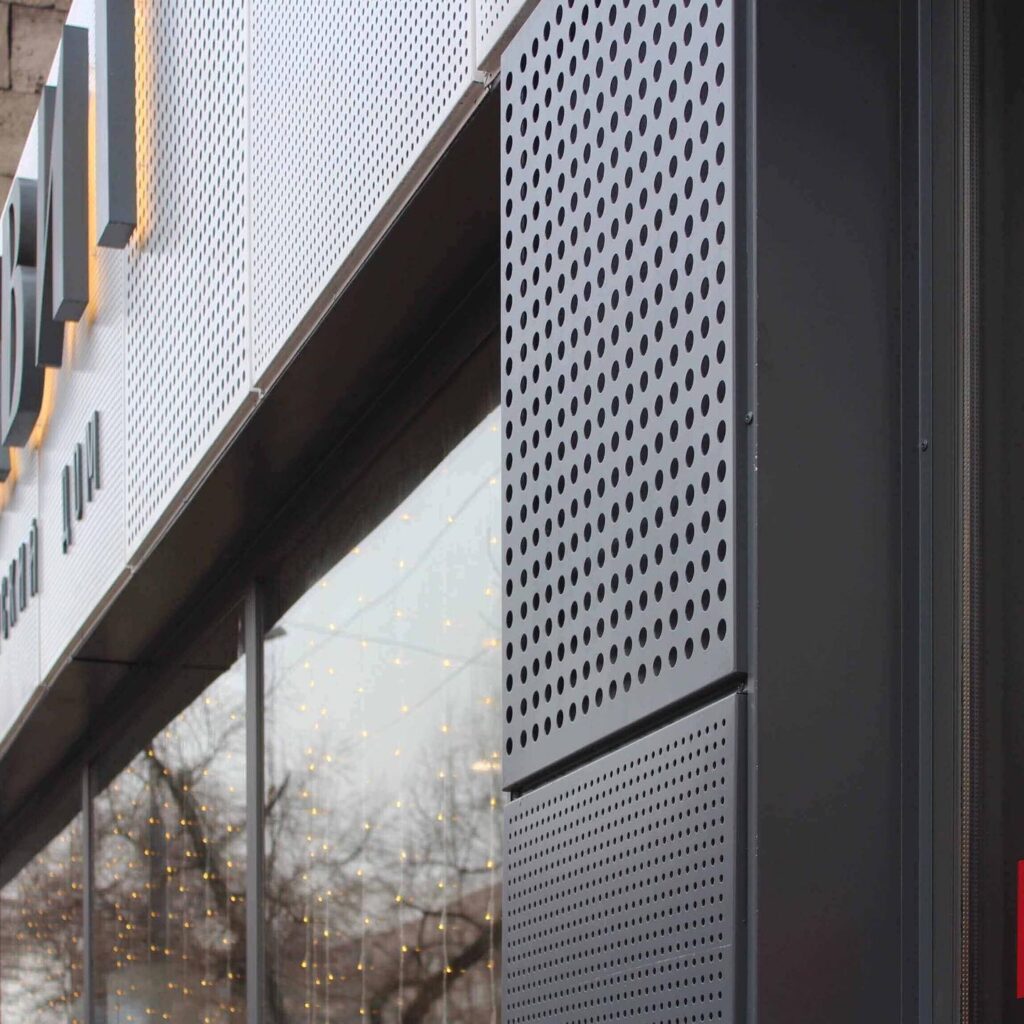
Types of Architectural Facades
Architectural facades come in various styles and materials, each offering different benefits depending on the building’s design and purpose. Here are some popular types of facades:
- Glass Facades
Glass facades are commonly used in modern commercial and residential buildings due to their ability to create a sleek, transparent appearance that allows for natural light. While offering excellent aesthetic appeal, glass facades can also improve energy efficiency when combined with double-glazed or insulated glass panels. - Aluminum Facades
Aluminum is an increasingly popular material for facades, thanks to its lightweight, durable, and weather-resistant properties. Aluminum facades are often used in commercial buildings, high-rises, and residential complexes due to their versatility in design and long-lasting performance. Aluminum’s resistance to corrosion makes it a top choice for buildings in coastal or high-humidity areas. - Stone or Brick Facades
Stone and brick facades are traditional options known for their durability and timeless appeal. These materials offer excellent thermal insulation and are often used in residential buildings, heritage projects, and some commercial structures. However, they tend to be heavier and require more structural support compared to other materials. - Timber Facades
Timber facades are used for a natural, organic look, often in residential, hospitality, or eco-friendly buildings. While timber facades can offer excellent insulation and aesthetic appeal, they may require regular maintenance to preserve their appearance and prevent degradation due to weather conditions. - Composite Facades
Composite facades combine two or more materials to offer enhanced performance and aesthetics. For example, a combination of aluminum and glass can create a sleek, modern look while improving energy efficiency. Composite facades are increasingly popular in both residential and commercial buildings due to their versatility and sustainability.
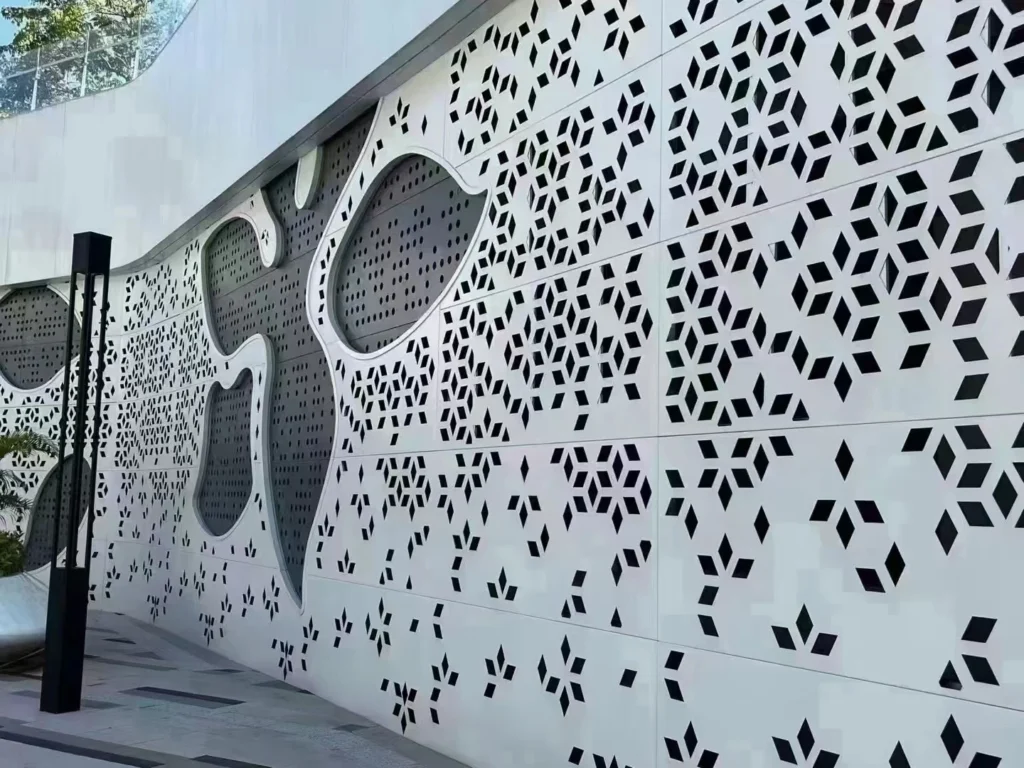
5 Benefits of Aluminum Facades for Modern Buildings
- Durability and Low Maintenance
Aluminum facades are highly durable, resistant to corrosion, and require minimal maintenance. Unlike wood or other materials that may require frequent repairs or refinishing, aluminum retains its appearance and structural integrity for many years, even in harsh weather conditions. - Energy Efficiency
Aluminum facades can be designed to improve a building’s energy efficiency. By using insulated panels or incorporating energy-efficient glass, aluminum facades help reduce heat transfer, which leads to lower energy costs for heating and cooling. This makes aluminum facades a sustainable option for both residential and commercial properties. - Aesthetic Flexibility
One of the standout features of aluminum facades is their ability to be customized. Aluminum can be shaped, coated, and finished in various ways, offering architects a wide range of design options. From modern, sleek finishes to more textured surfaces, aluminum facades can complement any architectural style. - Sustainability
Aluminum is a highly sustainable material due to its recyclability. In fact, it can be recycled indefinitely without losing quality. Using aluminum facades contributes to a building’s environmental credentials, helping achieve green building certifications such as LEED (Leadership in Energy and Environmental Design). - Lightweight
Aluminum is much lighter than other materials like steel or stone, which reduces the overall weight of the building structure. This lightweight property allows for easier transportation, handling, and installation, making it a cost-effective choice for large-scale construction projects.

10 Performance Features of Aluminum Facades
- Corrosion Resistance
Aluminum’s natural resistance to rust and corrosion makes it ideal for use in coastal areas and regions with high humidity. - UV Resistance
Aluminum facades treated with UV-resistant coatings prevent color fading and degradation caused by exposure to the sun. - Weather Protection
Aluminum facades protect buildings from rain, snow, and extreme weather conditions, ensuring the building’s longevity. - Thermal Insulation
With insulated aluminum panels, aluminum facades can provide excellent thermal performance, helping to reduce heating and cooling costs. - Fire Resistance
Aluminum is a non-combustible material, offering improved fire safety for buildings. - Sound Insulation
Aluminum facades combined with insulated glass help reduce external noise, making them ideal for urban areas. - Design Flexibility
Aluminum can be easily molded, bent, and shaped into various forms, providing limitless design possibilities. - Structural Strength
Despite being lightweight, aluminum offers excellent structural strength, allowing for large panels without the risk of warping or bending. - Easy Maintenance
Aluminum facades require minimal maintenance compared to other materials like timber or stone, which need periodic cleaning, sealing, or painting. - Environmental Sustainability
Aluminum is 100% recyclable, and using aluminum facades contributes to reducing the environmental impact of building materials.
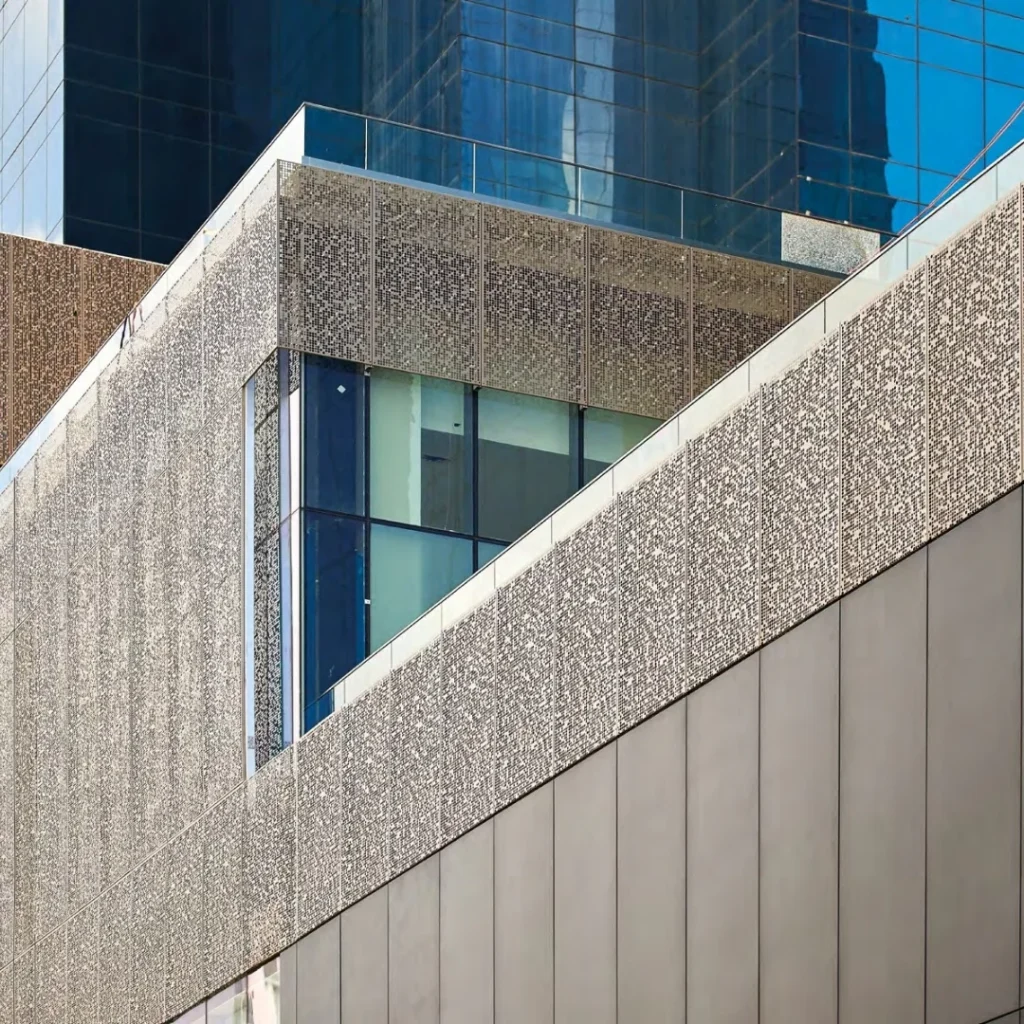
Conclusion
Architectural facades are not only essential for protecting buildings but also serve as key design elements that define the aesthetic of modern architecture. Aluminum facades, in particular, stand out for their durability, energy efficiency, design flexibility, and sustainability. Whether you are planning a new construction project or upgrading an existing one, incorporating aluminum facades into your building design will not only enhance its visual appeal but also improve its energy performance and long-term durability.
By understanding the benefits and performance features of aluminum facades, you can make more informed decisions and create buildings that are both functional and visually striking.
